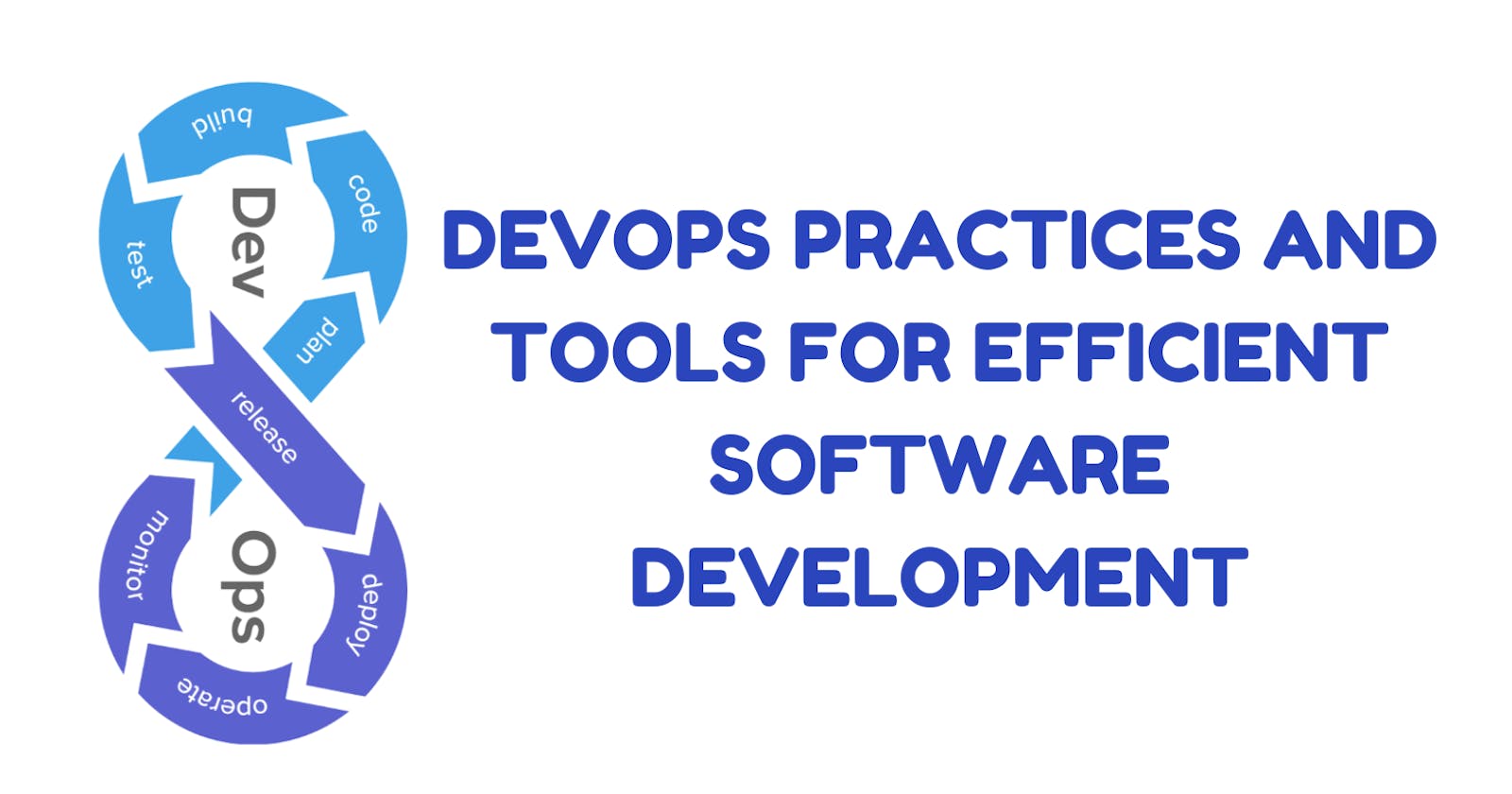Introduction
DevOps, short for Development Operations, is a set of practices and tools aimed at improving the collaboration and efficiency between software development and IT operations teams. By integrating development and operations workflows, DevOps practices enable organizations to deliver high-quality software faster, more reliably, and with increased agility. In this article, we will introduce commonly used DevOps practices and tools, such as continuous integration, continuous delivery, application monitoring, and collaboration tools, to help you understand how they can benefit your software development processes.
Continuous Integration (CI)
Continuous Integration (CI) is a DevOps practice that involves automatically building, testing, and integrating code changes into a shared repository as frequently as possible. CI helps identify and fix integration issues early in the development process, ensuring that code changes do not negatively impact the overall stability of the software. Popular CI tools include:
Jenkins: An open-source automation server that supports continuous integration and continuous delivery. Jenkins provides a wide range of plugins to integrate with various tools and technologies, making it highly customizable.
Travis CI: A cloud-based CI service that is optimized for GitHub repositories. Travis CI automatically builds and tests code changes whenever changes are pushed to a GitHub repository, providing quick feedback to developers.
CircleCI: A cloud-based CI/CD platform that provides fast and easy-to-use continuous integration and continuous delivery services. CircleCI supports a wide range of programming languages and integrates with popular code hosting platforms.
Continuous Delivery (CD)
Continuous Delivery (CD) is an extension of CI that aims to automate the process of releasing software changes into production. CD ensures that software changes are tested, verified, and ready for deployment at any given time. Some commonly used CD tools include:
Docker: An open-source platform that enables developers to package applications and their dependencies into containers, providing a consistent and reproducible runtime environment. Docker containers can be easily deployed across different environments, making it an ideal tool for continuous delivery.
Kubernetes: An open-source container orchestration platform that automates the deployment, scaling, and management of containerized applications. Kubernetes provides features such as rolling updates and canary deployments, which are crucial for implementing robust and reliable continuous delivery pipelines.
Ansible: An open-source automation tool that simplifies the configuration and management of IT infrastructure. Ansible can be used to automate the deployment and configuration of applications, making it an ideal tool for implementing continuous delivery workflows.
Application Monitoring
Application monitoring is a critical DevOps practice that involves tracking and analyzing the performance and availability of software applications in production. Application monitoring helps identify and resolve performance issues, errors, and other anomalies, allowing organizations to deliver reliable and high-performing software. Some commonly used application monitoring tools include:
Prometheus: An open-source monitoring and alerting toolkit that is designed for reliability and scalability. Prometheus collects, stores, and analyzes time-series data, allowing organizations to gain insights into the performance and health of their applications.
Grafana: An open-source data visualization and monitoring platform that works seamlessly with Prometheus and other monitoring tools. Grafana provides a rich set of visualization options and dashboards, making it easy to monitor and analyze application performance.
New Relic: A popular application performance monitoring (APM) tool that provides real-time monitoring and analysis of applications, servers, and databases. New Relic offers features such as error tracking, performance profiling, and distributed tracing, making it a comprehensive APM solution.
Collaboration Tools
Collaboration is a key aspect of DevOps, as it promotes communication, coordination, and knowledge sharing among development, operations, and other teams involved in the software development process. Some commonly used collaboration tools include:
Slack: A popular team collaboration tool that provides real-time messaging, file sharing, and integrations with various other tools. Slack allows teams to communicate and collaborate in channels, share important information, and streamline communication across different teams.
Jira: A widely used project management tool that facilitates collaboration and coordination among team members. Jira provides features such as issue tracking, task management, and agile project management, making it an ideal tool for managing software development projects and workflows.
Git: A distributed version control system that enables teams to collaborate on code changes in a structured and organized manner. Git provides features such as branching, merging, and code reviews, which facilitate collaboration among developers and ensure that changes are tracked and managed effectively.
Confluence: A collaborative wiki tool that allows teams to create, share, and organize documentation. Confluence provides features such as document editing, commenting, and version history, making it easy for teams to create and maintain documentation for their projects, processes, and best practices.
In conclusion, DevOps practices and tools play a crucial role in modern software development, helping organizations achieve faster, more reliable, and more efficient software delivery. Continuous integration, continuous delivery, application monitoring, and collaboration tools are commonly used DevOps practices and tools that enable teams to work seamlessly together, automate processes, and ensure high-quality software releases. By implementing these practices and utilizing these tools, organizations can achieve improved collaboration, faster time to market, and higher customer satisfaction. Embracing DevOps practices and tools can bring significant benefits to your software development processes, leading to more efficient and effective software delivery.

